The State Rooms at Buckingham Palace open to the public each summer. Don’t miss your chance to go behind-the-scenes at the Queen’s London home
Buckingham Palace is a world-famous icon of Great Britain and its monarchy. Throughout its history, it has been a family home, an extravagant architectural project, a bomb target and a backdrop for national celebrations. But for all its splendour, today the Queen is most likely to consider it as her office.
The building of Buckingham Palace
The cumulative creation of architects John Nash, Edward Blore and Sir Aston Webb over more than two centuries, the London landmark is the working headquarters of the monarchy. It’s where the Queen spends most of the week, fulfilling her duties as Head of State, before retreating to Windsor Castle at the weekend.
Many of the 775 rooms of Buckingham Palace are offices for a staff that swells up to 900 in the summer months when the 12ft mahogany double doors of the Grand Entrance are ceremoniously opened to the public. And behind the scenes, those that work there even have access to their own post office and doctor’s surgery.
No doubt many of them affectionately refer to the palace by its nickname ‘Buck House’, a nod to its past as the more humble – but still very fashionable – dwelling of John Sheffield, the 3rd Earl of Mulgrave, who was named Duke of Buckingham in 1703. Built on land leased from the Crown, it was bought back from his son when King George III took a fancy to it as a more homely alternative to the nearby Tudor St James’s Palace.
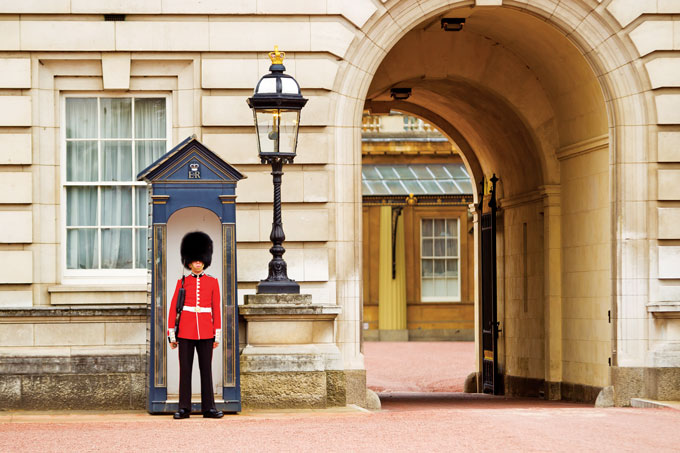
It remained a residence (known as the Queen’s House), while St James’s was maintained as the official seat of the court – and 14 out of George’s 15 children were born there. But his more extravagant son, who became King George IV, was more concerned by the growing number of foreign visitors and journalists who remarked that it was surprising that the burgeoning capital city of the greatest power in the world didn’t have a proper royal palace.
King George IV and Buckingham Palace
The new king’s lavish spending on extending and modernising the palace – with the help of his Brighton Pavilion architect John Nash – was in sharp contrast to his father’s £73,000 renovation budget. In fact, by the time the king died in 1830, Parliament had had enough and dismissed Nash, even though much of his work was unfinished. Nevertheless, he had succeeded in creating a palace more fitting of Britain’s status in the world.
But his neo-classical creation – which houses the 19 state rooms that still play such an important role in the official ceremonies, events and audiences presided over by the Queen – is now hidden behind the familiar balconied Portland stone facade of the East Wing.
The new wing was built for Queen Victoria, who had fallen in love with the palace that her beloved uncle, King William IV, had completed. She needed more space to make it a home for her rapidly growing family – and while her husband Albert watched over the redecoration of the state rooms, the East Wing was designed by Nash’s replacement, Edward Blore, built by Thomas Cubitt, and finished in 1847. Victoria then lived and entertained happily there until she abandoned the palace – and public life – on Albert’s death in 1861.
Buckingham Palace’s balcony
The finishing touches that created the palace you see today came in 1913. Years of London grime had taken their toll on the soft Caen stone of the original, so Webb and sculptor Thomas Brock were tasked with giving the East Wing a facelift. They also added the imposing columns to the now famous balcony, where King George V and Queen Mary faced crowds on the outbreak of WWI just a year later. Latterly it was where Charles and Diana, then William and Catherine, had their first public kiss.
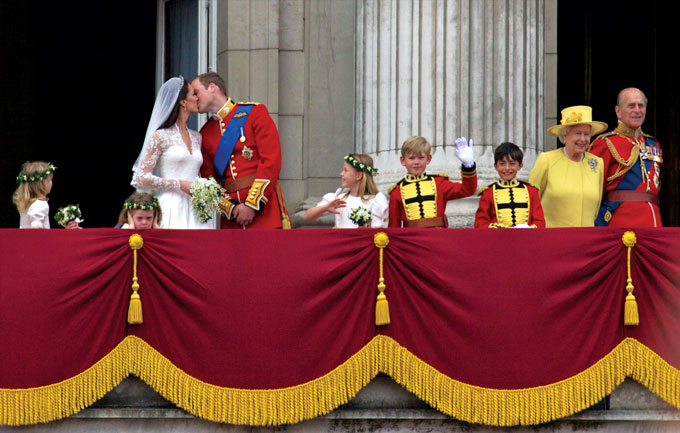
Visitors don’t have access to the room behind the balcony – it’s still very much the private part of the palace where the Queen has her apartments. But, every summer since 1993, 400,000 visitors get to go inside Buckingham Palace and marvel at the state rooms of the West Wing, view some of the palace’s 20,000 works of art on display, and walk in the footsteps of the great and the good – from Sir Winston Churchill to Nelson Mandela, and Laurence Olivier to Dame Judi Dench.
Buckingham Palace’s Grand Staircase
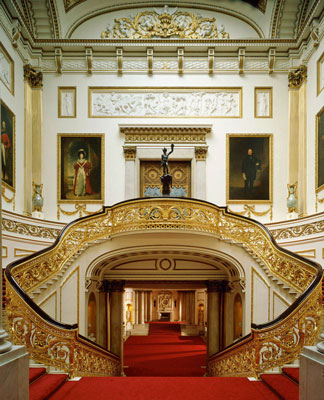
Beyond the covered carriage entrance, the impact of the Grand Hall is somewhat muted compared to what comes next. More of a functional space, it breaks you in gently to the Belle Epoque cream and gold colour scheme introduced by King Edward VII (his mother had gone for a bolder, Renaissance-inspired polychrome). But your eye is immediately drawn to the Grand Staircase to the left – put in by Queen Victoria in 1898 at the cost of £3,900 (£211,000 in today’s money). Topped with an etched glass dome, and with an emphasis on height and light, ascending it adds to the growing sense of anticipation.
This only builds as you are led through the Guard Chamber and into the Green Drawing Room – given its name by the green silk wallpaper chosen originally by King William IV’s Queen Adelaide, but still replaced every 30 years. But once again, your eyes are drawn upwards to the Nash masterpiece that is the ceiling – something which our Royal Collection guide refers to as an “inverted jewellery box”.
Buckingham Palace’s Throne Room
Yet even this is not as grand as the Throne Room beyond it – created by Nash as a theatre for all the trappings of monarchy, and which is now used as the backdrop for royal wedding photos.
With deep red walls matching the deep red carpets, the focus of the room is the dais at the far end, containing the two royal thrones – with the Queen’s sitting a couple of centimetres taller than Prince Philip’s. There is symbolism everywhere: Nash’s ornate ceiling is dominated by the star of the chivalric Order of the Garter – a common theme in the palace’s décor – but sitting in the centre is the Tudor Rose in honour of the Royal Family, which brought peace to the kingdom after centuries of strife. And off to one side is the throne that belonged to Queen Victoria.
The Throne Room is arguably the most dramatic of the tour, after which visitors can relax a little; just as well, as they move into the 154ft (47m) long picture gallery, which houses an outstanding collection of paintings from the likes of Holbein, Rembrandt, Rubens, Canaletto and Van Dyck. If the rumours are true, the quality of the hangings didn’t deter the young Princes William and Harry from playing football in this room. But equally heartening is the image of a young Queen Elizabeth II practising her walk for her coronation while wearing a crown weighing a staggering 5lb (2.2kg).
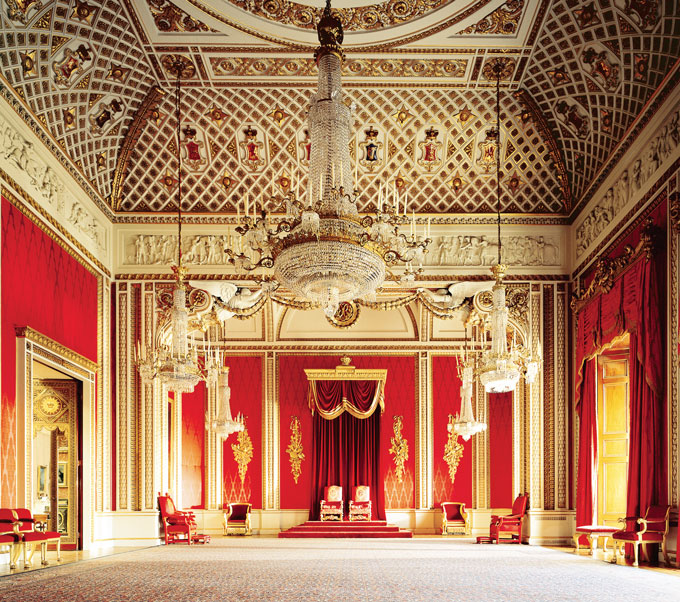
Queen Victoria’s most impressive addition to the palace was the Ballroom. Towering 46ft (14m) high and 111ft (34m) long, it was a much more suitable place to entertain than the Throne Room. Nash’s Brighton Pavilion was sold off to pay for it – and its organ takes pride of place at one end of the room, opposite an elegant throne canopy (made by London’s upmarket homeware store Heal’s) at the other.
Today, this room is used for investitures, in which the Queen (or Prince Charles) bestows knighthoods and other honours to deserving subjects, as well as for state banquets attended by up to 160 people.
The State Dining Room, Buckingham Palace
Smaller official dinners are held in the State Dining Room where there is a mahogany table that is so highly polished it doesn’t need a tablecloth. You can almost see the reflection of the ceiling, this time by Blore, completed after Nash’s dismissal, but imitating his style. Blore also designed the heavily gilt picture frames and the most significant contains a large portrait of King George IV, by Sir Thomas Lawrence, surrounded by images of war as a display of his strength and bravery – even though he never went to war.
It’s from the dining room that you get the first glimpses of the largest private garden in London, which is the setting for three official garden parties each July. But there are still three more rooms to appreciate in all their glory before visitors descend back down to it: the Blue Drawing Room, the Music Room and the White Drawing Room.
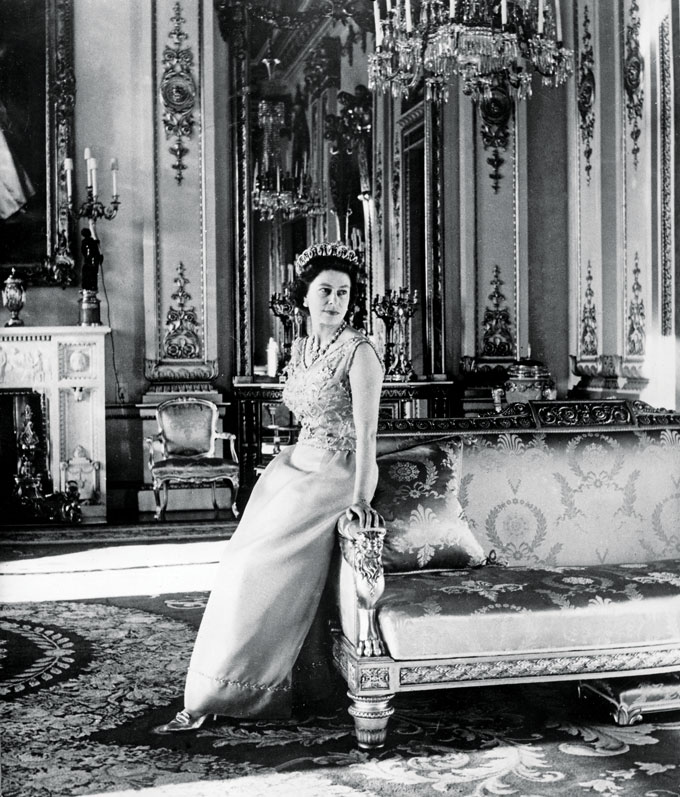
Blue Drawing Room
The highlight of the Blue Drawing Room is the Sèvres porcelain Table of the Grand Commanders, as seen in King George IV’s dining room portrait – commissioned by Napoleon and given to George by Louis XVIII.
Nash’s acoustically domed ceiling once again takes centre stage in the Music Room. Looking up at it, our guide aptly remarks: “This is what Alice in Wonderland must have felt like when the cards fell down around her.” She also likens the chandeliers – the only two in the palace that can be lowered by remote control – to water falling over rocks.
The Music Room has hosted several royal christenings, including those of the Queen’s eldest three children and Prince William. The golden font used (originally a gift to Queen Victoria) is on occasion displayed to the public. Otherwise it is used for private recitals and receptions, and the piano has been played by the likes of Sir Elton John. There’s also a small golden-cased piano in the White Drawing Room next door, on which Victoria was taught to play by composer Felix Mendelssohn.
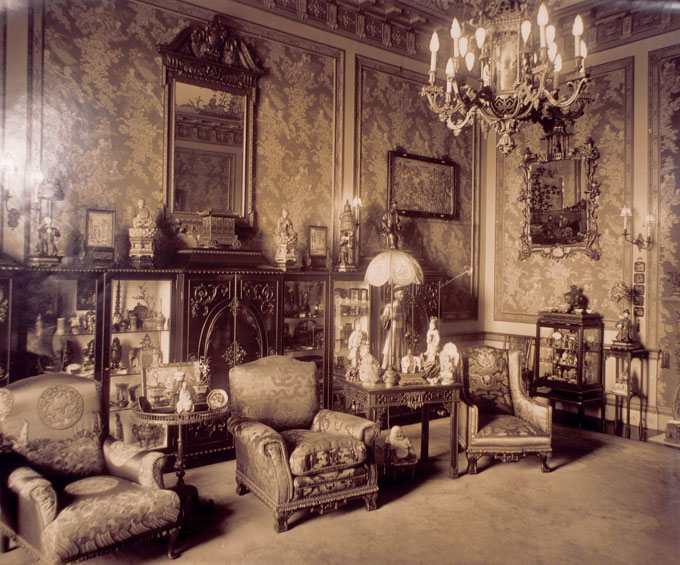
The Drawing Room, Buckingham Palace
This final drawing room is the most elegant; smaller and more intimate. It’s here that the Queen has weekly meetings with the Prime Minister and welcomes foreign visitors. The room also has a secret door built into an ebony-veneered cabinet beneath tall mirrors, providing the Royal Family with a discreet means of entering the state rooms from the private rooms beyond.
As you would expect from the formality of the state rooms, every event is stage-managed; procedures have been fine-tuned over the centuries and it all appears to run like clockwork. But, as you wander through the rooms, it’s also worth sparing a thought for the two palace timekeepers – nicknamed ‘Tick’ and ‘Tock’ – who are responsible for its 350 clocks, each of which has different workings and different schedules for their upkeep.
And what about those in charge of the countless chandeliers, which each have to be cleaned once a year, or the 760 windows that have to be cleaned every six weeks? Just as it is for the Queen, it’s all in a day’s work.

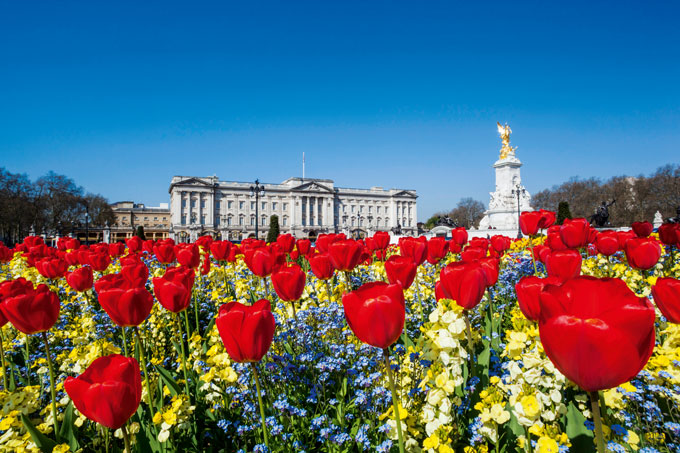


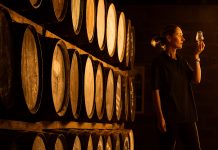

 © 2024
© 2024